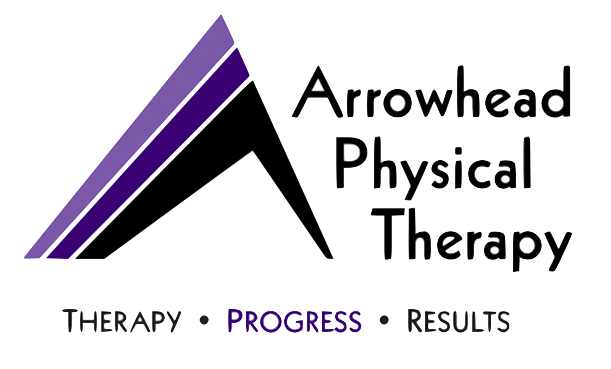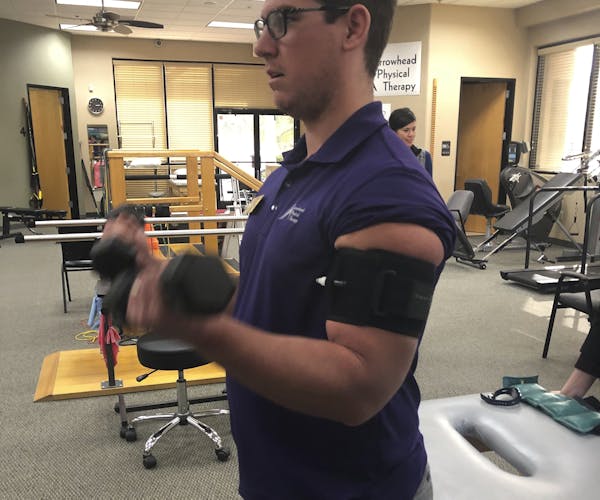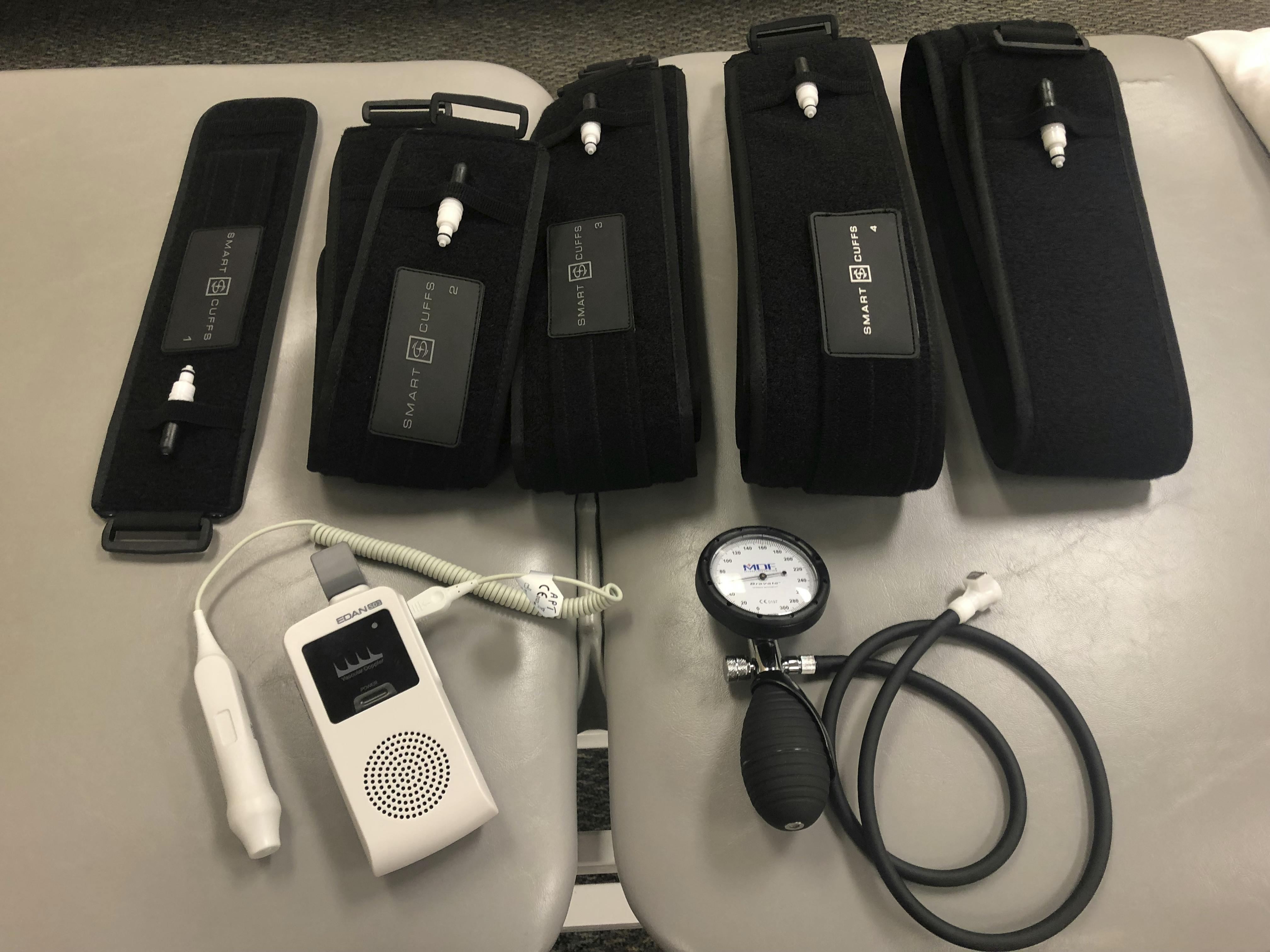
Blood flow restriction (BFR) training is a training strategy involving the use of cuffs or wraps placed around a limb during exercise, to maintain arterial inflow to the muscle while preventing venous return. BFR can be used with resistance training, or with other modalities, including walking.
Programs of resistance training with BFR and low loads (20 – 30% of 1Rep Maximum) appear to increase strength and produce hypertrophy. BFR programs appear to increase muscular size and strength more than resistance training without BFR when using matched (low) relative loads.
There is evidence that resistance training with BFR would be able to improve muscular power, sprint running speed, and endurance, and that non-resistance training methods (like walking) with blood flow restriction can cause hypertrophy.
Benefits of BFR
- Improve bone density and function
- Increase muscle size
- Improve Aerobic capacity
- Maintain in-season muscle mass and strength
- Preserve muscle mass and strength during forced inactivity (bedrest and casting)
Populations that can benefit from BFR include:
- Post-operative patients
- Post injury (tolerates limited loads)
- Elderly (low loads)
- Bedridden Individuals
- Athlete/Performance improvement
- Anyone that can’t tolerate High Intensity Training
Advantages of using BFR:
- Increased protein synthesis
- Satellite cell fusion
- IGF-1, GH, and collagen synthesis
- Bone healing,
- Tendon and ligament Healing
- Capillary growth
- Increased mitochondrial density
- Improved VO2(a measure of max O2 transport and uptake via the lungs, heart, circ system and local tissue permeability)
- Increases anabolic hormones such as testosterone
- Decreased joint/tissue stress
- Little to no muscle damage
- Little to no recovery needed
- Little to no soreness or delayed onset muscular soreness
- Low intensity exercise is necessary (resistance or cardio)



